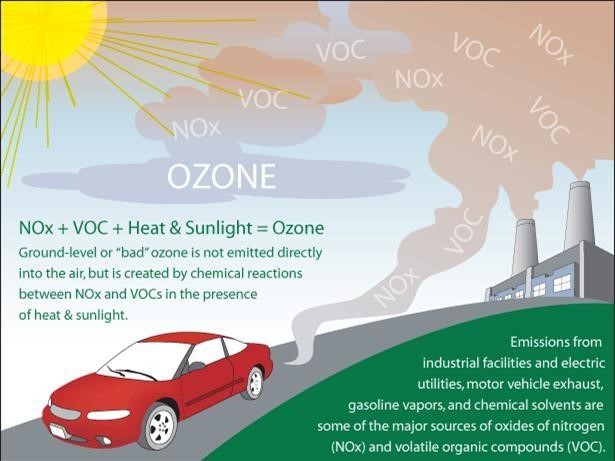NWS Cleveland to Begin Relaying Air Quality Advisories from NOACA this Season
Starting this summer, the National Weather Service in Cleveland will begin to relay Air Quality Advisories issued by the Northeast Ohio Areawide Coordinating Agency (NOACA) on May 1, 2019. In the sections below, we will provide more information about air pollution, air quality advisories, NOACA, and where you can find air quality information.
NOACA
The Northeast Ohio Areawide Coordinating Agency (NOACA) is the transportation and environmental planning agency that represents state, county, city, village, and township officials in Greater Cleveland. The agency and its partners cooperatively develop and implement plans to ensure that travel throughout the region is safe, cost-effective and environmentally sound. NOACA’s air quality forecast responsibilities cover eight counties: Ashtabula, Cuyahoga, Geauga, Lake, Lorain, Medina, Portage, and Summit. If you want to learn more about NOACA, you can visit their website at www.noaca.org
Air Pollution
Pollution can trigger a variety of health problems, including chest pain, coughing, throat irritation and congestion. It can worsen bronchitis, emphysema and asthma. According to one 2013 study, air pollution from the transportation sector was responsible for an estimated 384 premature deaths in Greater Cleveland, and the region had the second highest mortality rate from mobile emissions.
The most common form of air pollution that can affect human health is ozone. Ozone is a gas composed of three atoms of oxygen (O3). Ozone occurs both in the Earth's upper atmosphere and at ground level. Ozone can be good or bad, depending on where it is found. Called stratospheric ozone, good ozone occurs naturally in the upper atmosphere, where it forms a protective layer that shields us from the sun's harmful ultraviolet rays. Ozone at ground level is a harmful air pollutant, because of its effects on people and the environment, and it is the main ingredient in “smog."
Tropospheric, or ground level ozone, is not emitted directly into the air, but is created by chemical reactions between oxides of nitrogen (NOx) and volatile organic compounds (VOC). This happens when pollutants emitted by cars, power plants, industrial boilers, refineries, chemical plants, and other sources chemically react in the presence of sunlight. Ozone is most likely to reach unhealthy levels on hot sunny days in urban environments, but can still reach high levels during colder months. Ozone can also be transported long distances by wind, so even rural areas can experience high ozone levels. To learn more about ground level ozone and other pollutants, visit the EPA’s web page here: https://www.epa.gov/ground-level-ozone-pollution/ground-level-ozone-basics#wwh

Air Quality Advisories
Air Quality Advisories will be forecast and issued by NOACA and relayed by the National Weather Service in Cleveland. Air Quality Advisories will show up on the Warning, Watch, and Advisories map through our homepage at www.weather.gov/cle and will also be disseminated via NOAA Weather Radio.
NOACA and its partners forecast Air Quality Advisories when air quality levels will be unhealthy for sensitive groups, including children, the elderly and those with breathing difficulties. This is based on EPA’s Air Quality Index (AQI):
"Good" AQI is 0 to 50. Air quality is considered satisfactory, and air pollution poses little or no risk.Each category corresponds to a different level of health concern. The six levels of health concern and what they mean are:
What Can You Do?
There are many things you can do as an individual to reduce the amount of air pollution you produce:
To be prepared, you can:
Additional Resources